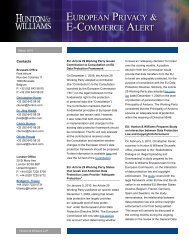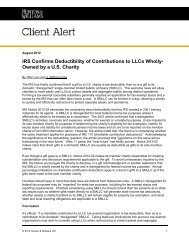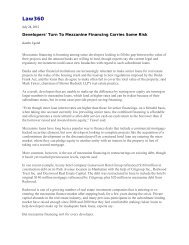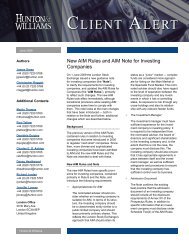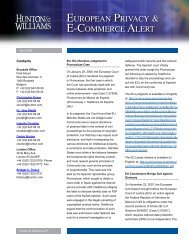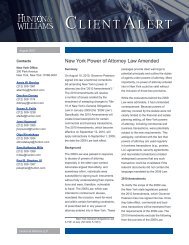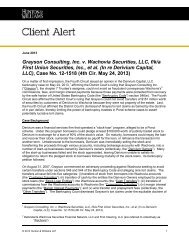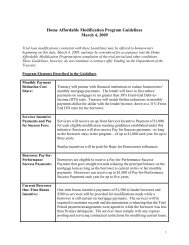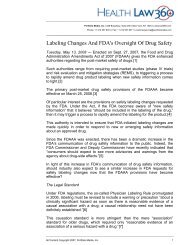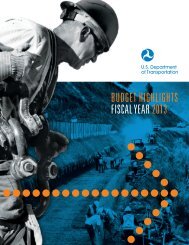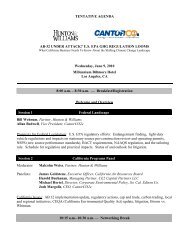Hunton & Williams Renewable Energy Quarterly, September 2009
Hunton & Williams Renewable Energy Quarterly, September 2009
Hunton & Williams Renewable Energy Quarterly, September 2009
You also want an ePaper? Increase the reach of your titles
YUMPU automatically turns print PDFs into web optimized ePapers that Google loves.
<strong>Renewable</strong> <strong>Energy</strong> <strong>Quarterly</strong><br />
compliance costs and foils the kind of long-term planning<br />
and investment conducive to the development of new,<br />
climate-friendly technologies, products and processes.<br />
The situation is similar with respect to the offsets program<br />
established by the bill, but with far greater implications,<br />
as offsets arguably represent the only substantial cost<br />
containment mechanism in the entire bill. Despite providing<br />
a substantial amount of detail, the bill leaves some critical<br />
components of the offsets program to the EPA and the<br />
Department of Agriculture. For example, the bill does not<br />
provide a list of eligible offset project types, instead requiring<br />
the EPA and USDA to develop lists within one year of<br />
enactment.<br />
Once those are developed, the EPA and USDA would then<br />
need to develop and finalize project methodologies — complex,<br />
technical procedural requirements for an emission<br />
reduction project to be eligible to receive offset credits. The<br />
need to complete this process in two years raises concerns<br />
over when offset projects could begin generating offset credits,<br />
especially given that developing new offset projects could<br />
take years once the rules are finalized.<br />
Under the bill, the EPA and USDA<br />
would be expected to issue two billion<br />
offset credits each year.<br />
This tight timeframe becomes of even greater concern<br />
given the number of offset credits the EPA and USDA would<br />
need to issue each year to maximize the bill’s cost containment<br />
features. Existing offset programs such as the Clean<br />
Development Mechanism and various voluntary carbon market<br />
programs have never come close to issuing two billion<br />
credits over their entire multiyear lifetimes. Under the bill, the<br />
EPA and USDA would be expected to issue two billion offset<br />
credits each year. How many of those two billion would be<br />
available before the first compliance deadline in 2013 is an<br />
unanswered question.<br />
Compensatory allowances and the offsets program are<br />
just two examples of key features that will depend heavily<br />
on agency rulemaking processes that historically have<br />
been anything but expeditious. Legal challenges to agency<br />
rulemaking, which figured prominently in the rulemakings<br />
following the Clean Air Act Amendments of 1990, could add<br />
further delay to the full implementation of many of the bill’s<br />
most important provisions.<br />
Equally, if not more, significant than the timing of agency<br />
rulemakings is the extraordinary discretion the bill grants to<br />
the EPA and other agencies to alter components of the capand-trade<br />
system.<br />
Under the offsets provisions, for example, the EPA and<br />
USDA are required to revise key features of the program<br />
every five years as part of a periodic review. This authority<br />
is purportedly to ensure the environmental integrity and efficient<br />
operation of the cap-and-trade system. While these are<br />
important goals, the unchecked nature of this authority could<br />
frustrate project developers and covered entities seeking to<br />
participate in the carbon market. Most emission reduction<br />
projects take a year or more to develop and then can operate<br />
for a decade or longer.<br />
2 <strong>Renewable</strong> <strong>Energy</strong> <strong>Quarterly</strong> www.hunton.com



